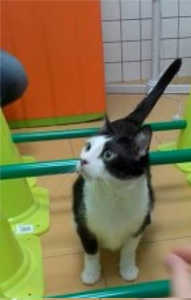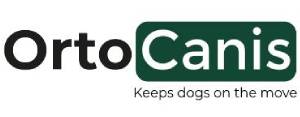Depending on the case, different objectives can be set, such as: Eliminate pain and inflammation, reduce limping, maintain and/or improve range of motion, maintain tone, mass and muscle strength, minimize or slow down the effects of joint degeneration -arthritis-, avoid compensations and, give the maximum capacities so that the animal can be functional and can have a good quality of life.
Treatment stages:
Phase I: Pain control and reduction of inflammation and swelling.
If the animal is in pain, it will not allow itself to be handled and the desired goals will not be achieved. During the first few days, it is important to act on the inflammation and pain and to prevent muscle atrophy and a decrease in joint range. For this, passive techniques are used that reduce inflammation, provide analgesia, and help maintain tone, mass, and range of mobility. Among these techniques is electrotherapy (analgesic currents, TENS), massages, passive mobilizations and cryotherapy (cold), magnetotherapy (magnetic fields), ultrasounds that reduce inflammation and edema, laser. At the beginning of the recovery, these applications should be combined with the pharmacological therapy that the referring veterinarian deems appropriate for the case.
The application of these devices provides an advantage, they produce analgesia and therefore, the intake of drugs can be reduced; which is very useful for animals that can't ingest certain medications because their system doesn't allow it.
Phase II: Increase in mobility arches and flexibility of soft tissues.
It is important from the beginning to massage and move the injured area as long as there is no veterinary contraindication and, respecting in the case of fixation, the healing and union period of the fixed parts. The act of massaging and moving the area or the affected limb helps maintain mobility, prevents loss of mass and tone, and works on the proprioceptors.
A gentle mobilization combined with different massage techniques helps to decrease inflammation and reduce pain.
Once the acute phase has passed, 48-72 hours, and without risk of infection or inflammation, it can be introduced heat that helps to make tissues more elastic, reduces pain, and increases vascularization.
At the beginning and end of the session it is used. cold, as it has properties that act on reducing inflammatory response, swelling, and pain.
Phase III: Increase in muscle mass and strength
The muscle electrostimulation It helps prevent the onset of atrophy and maintains muscle mass and tone. With electrical stimuli, we can stimulate nerve conduction.
Other exercises like, walking in the water or walk on a carpet, they also help to increase mass and strength.
Phase IV: Reeducation of walking.
From the fourth day and for the following two weeks, when the inflammation and pain have disappeared, it is time to introduce simple active exercises. In the case of the front limbs, exercises with a light, a duster, a feather... will be used so that the animal moves its affected limb. In the case of the hind limbs, a harness can be placed and short walks can be started within a closed space to force the animal to distribute its weight equally on all four limbs, thus preventing any imbalance between limbs caused by incorrect support on the ground. Walks are an exercise that gradually increases in duration until full recovery. It might seem strange to force a cat to walk around a room, but it is a very rewarding exercise, especially in the early days of recovery. Once the initial phase is over, the cat can be allowed to roam freely or with the help of a toy to encourage movement.
If the feline allows it, if there is no veterinary contraindication, without stitches and with well-closed wounds, the animal can be introduced to water. The advantages of water are used to improve recovery. Hydrotherapy (underwater treadmill) facilitates the animal's stance without loss of balance and, thanks to flotation, without having to bear all its weight. In addition, flotation allows work with animals with bone pain and with little muscle mass. The pressure of the water exerted on the animal's body increases sensitivity and decreases inflammation and edema. Water work, underwater treadmills or swimming is increased as the animal recovers. In addition, with water, we can recover the motor pattern, increase mass, tone and strength, work on respiratory capacity and maintain and/or improve mobility.

The use of boards, Bohler board, balls and trampolines They are important for working on balance, proprioception, and above all, the integration of the affected limb or limbs.
Phase V: Reintegration into your normal life.
Already in the final phase, starting from the two weeks, when the cat has integrated the walking pattern, exercises are carried out to improve the quality of movement. These are more complex active exercises to integrate the affected limb or limbs. With active and proprioception exercises, muscle tone, mass, and strength are increased; coordination and balance are worked on, as well as range of motion. Tracks with different surfaces are used., cones, poles for dog rehabilitation and circuits.
It is important to maintain a good weight control during and after recovery. Excess weight makes recovery more difficult and can contribute to the development of secondary problems, as well as damage to your joints.
Dog physiotherapist graduated from the University of Tennessee
Specialist technician of Ortocanis.com



